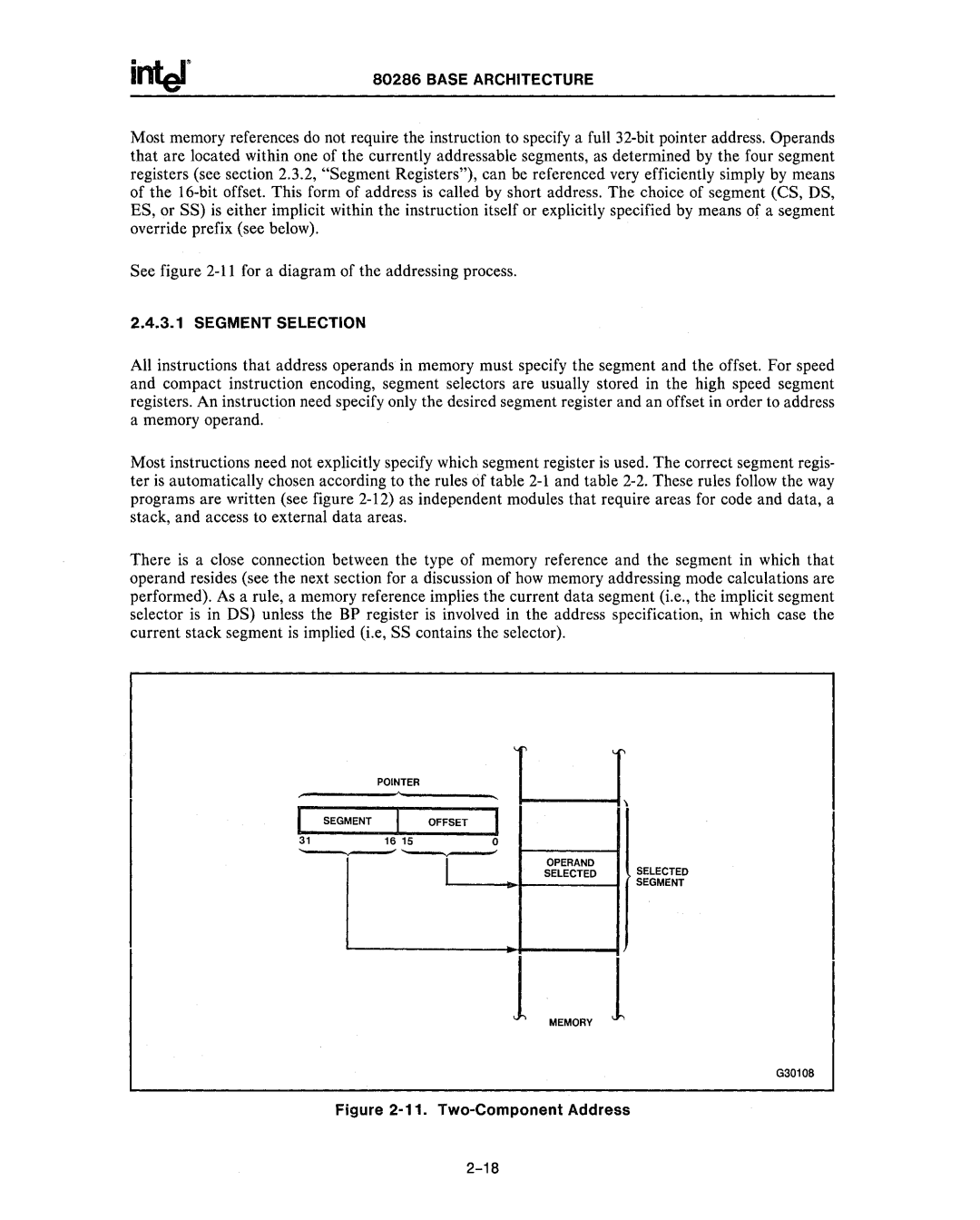
80286 BASE ARCHITECTURE
Most memory references do not require the instruction to specify a full
See figure
2.4.3.1 SEGMENT SELECTION
All instructions that address operands in memory must specify the segment and the offset. For speed and compact instruction encoding, segment selectors are usually stored in the high speed segment registers. An instruction need specify only the desired segment register and an offset in order to address a memory operand.
Most instructions need not explicitly specify which segment register is used. The correct segment regis- ter is automatically chosen according to the rules of table
There is a close connection between the type of memory reference and the segment in which that operand resides (see the next section for a discussion of how memory addressing mode calculations are performed). As a rule, a memory reference implies the current data segment (Le., the implicit segment selector is in DS) unless the BP register is involved in the address specification, in which case the current stack segment is implied (i.e, SS contains the selector).
POINTER
I SEGMENTOFFSET
SELECTED SELECTED
1MEMORY 1
G3010B
